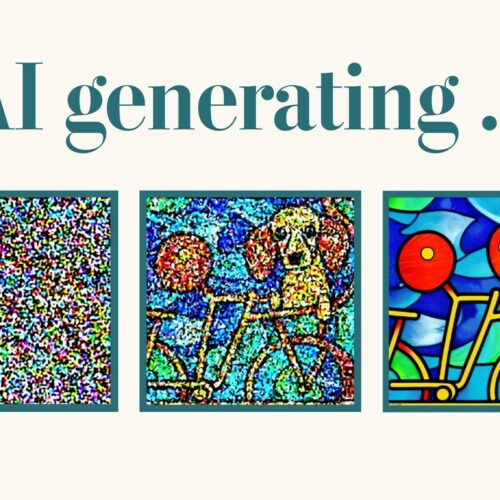AI
Warning: This graphic requires JavaScript. Please enable JavaScript for the best experience.
Customize your experience by changing the prompts below
A strange and powerful collaborator is waiting for you. Offer it just a few words, and it will create an original scene, based on your description.

This is artificial-intelligence-generated imagery, a rapidly emerging technology now in the hands of anyone with a smart phone.
The results can be astonishing: crisp, beautiful, fantastical and sometimes eerily realistic. But they can also be muddy and grotesque: warped faces, gobbledygook street signs and distorted architecture.
How does it work? Keep scrolling to learn step by step how the process unfolds.
Try out your own AI-generated images
Select a prompt from the options below, or
a photo

Van Gogh

stained glass

a magazine cover

Like many frontier technologies, AI-generated artwork raises a host of knotty legal, ethical and moral issues. The raw data used to train the models is drawn straight from the internet, causing image generators to parrot many of the biases found online. That means they may reinforce incorrect assumptions about race, class, age and gender.
The data sets used for training also often include copyrighted images. This outrages some artists and photographers whose work is ingested into the computer without their permission or compensation.
[AI selfies — and their critics — are taking the internet by storm]
Meanwhile, the risk of creating and amplifying disinformation is enormous. Which is why it is important to understand how the technology actually works, whether to create a Van Gogh that the artist never painted, or a scene from the Jan. 6 attack on the U.S. Capitol that never appeared in any photographer’s viewfinder.
Faster than society can reckon with and resolve these issues, artificial intelligence technologies are racing ahead.





